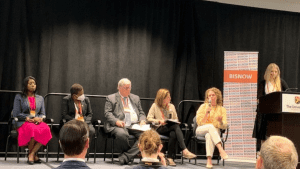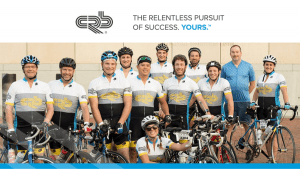
Trends in Talent Acquisition, COVID Edition
The pandemic, now approaching year three in full force, has impacted nearly every facet of the life sciences’ job market. A talent shortage existed pre-pandemic and has only accelerated since then. For life sciences employers, finding and securing talent will continue to be a major challenge throughout 2022.
However, like most disruptive forces, the resulting turmoil and upheaval created new opportunities and the impetus, or one might say necessity, to innovate. Talent acquisition strategies and tactics haven’t escaped disruption; the manner by which employers find, hire, and onboard new employees has had to adapt and evolve during the pandemic.
Life sciences talent teams have risen to pandemic challenges to create an entirely new hiring process and ecosystem in short order. This new process seemed strange at first, even awkward and alien, but once the dust settled an innovative new approach spearheaded by a move to remote methods emerged, yielding greater efficiencies.
Much like commercial real estate and office space design will never be the same, the talent acquisition game has irrevocably changed. And some would say this change is for the better.
Let’s take a look back on some of these pandemic-inspired changes to talent acquisition that have taken root in response to the pandemic.
Virtual Hiring Ascends
Talent acquisition, like all other aspects of the life sciences workforce, was forced to go remote once the new pandemic reality set in. This meant a collective rethinking of how best to find, hire, and onboard new employees.
Screening interviews, second-tier interviews, and even some final interviews and onboarding processes went virtual, leveraging Zoom and other virtual platforms in new, innovative ways.
While lab staff, i.e. essential workers, likely still came onsite for interviews more frequently, the talent wars transitioned to a nearly all-remote battlefield, so to speak.
“Two or three years ago everyone came to the office every day. We’ve learned that if you can do your work remotely, that’s okay—that’s been a huge transition in our industry. We’ve just become more creative. This is just a big win for recruiting, particularly when it comes to talent shortages in the region,” stated Susan Torrence, Human Resources Site Lead at GSK Rockville Biopharm.
Innovative new recruiting strategies like Virtual Recruiting Events also gained traction and found success. Some new employees began work without ever meeting their manager face-to-face, which was unthinkable before COVID-19.
“Time will tell the extent to which virtual talent management will stick, but we’ve certainly gotten more comfortable with these ways of working over the last couple of years. I expect there will be blended virtual and in-person approaches to meet business as well as individual needs going forward. In my new role, I didn’t meet my boss in-person for three months. My entire interview and onboarding process was virtual. In the immediate future, this is likely what we’ll see moving forward for remote roles,” shared Ed Radwinsky, Head of Human Resources at The Geneva Foundation.
Incentives Increase, Geographic Barriers Fall
The ongoing full-court press by biosciences employers to find, interview, and secure talented life sciences professionals means the job market is as hot as it’s ever been. A candidate’s market has motivated employers to enhance their compensation and benefit packages while seeking talent well-outside of their normal geographic boundaries.
The pandemic has certainly escalated the talent battles among life sciences employers.
“As an industry, the pandemic has helped to recruit more talent because employers are more open to giving more employees long-term incentives. This is huge. Companies are doing this so they can win talent. This is a big win for employees. Employers want to show that they’re invested in them,” shared Torrence. “I hope this stays and is our new way of doing business because we want highly invested employees at every level of an organization.”
We’ve written extensively about the BioHealth Capital Region’s (BHCR) talent needs, including a shortage of talent when compared to the hiring needs of its rapidly expanding life sciences hub. Remote work has caused a major shift in where the BHCR can hunt for talent at all levels. Geographic boundaries no longer exist and barriers to BHCR companies hiring a top-flight scientist out of Boston or San Francisco have fallen away to some degree.
“Even before the pandemic there was a shortage of talent in our region. As a life sciences community, we’ve been working to find a way to get more talent here. There’s thousands of jobs available here and companies in the region are starting to understand that they can bring in talent from other locations. This will help us fill some roles, but it’s important to understand that our area has a heavy manufacturing as well as research and development focus, which requires onsite work. So, yes, expanded hiring geographies will help, but it won’t solve all of our region’s hiring challenges,” added Radwinsky.
Employer Branding Becomes Essential
The days of branding as a strictly external sales and marketing strategy are over. The pandemic and the ongoing talent battle has awakened life sciences companies of all sizes to the value of employer branding. Employer branding is the intentional projection of a company’s values, culture, and rewards to current and potential employees. Communicating the “why” behind a long-tenured employee’s decision to stay and the reasons a potential employee should choose one company over another is essential. And this needs to be done across myriad communications channels in addition to being woven into the fabric of the hiring and onboarding processes.
Employer branding was gaining traction pre-pandemic, but its essential role in talent acquisition and retention has exploded in the past three years.
“One of the biggest pivots in talent is the use of social media and online platforms. We needed to pivot to focusing on our online employer brand and a remote sourcing and recruiting approach,” stated Radwinsky.
“We’ve all heard about the great resignation and it’s become more important to get talent to engage with your content. Early on in the pandemic, not a lot of people wanted to change jobs, but that turned into a so-called turnover tsunami. Now, every company is experiencing huge turnover. This means companies have to clearly communicate not just what it does but how it does it. There is an increased need to showcase a company’s culture and communicate that to candidates—candidates have had time to reflect on what makes them happy and understanding a culture fit is critical to them,” he added.
“In this environment, understanding your company’s story and telling it well is critical. We each need to share what makes us unique. At GSK we lean into emphasizing what sets us apart,” stated Torrence. “We need to be crystal clear about our story to reach the kinds of employees who consider us (GSK) a good match for them. In our storytelling we are meeting employees where they are; we are creating moments that matter.”
Hiring Process Must Be Streamlined and Efficient
To secure top talent in the pandemic job market hiring teams need to not only be agile, they also need to be fast. Inefficient hiring processes will lead to losing candidates to companies with stronger hiring processes. Thus, talent teams have had to level-up their processes because of the pandemic and the intensity of the talent wars.
“Top candidates are getting scooped up really quickly. HR and recruiting teams have had to take a hard look at their internal processes. These processes have to be streamlined, efficient, and as transparent as possible; you cannot have a long, drawn-out selection process. This is a byproduct of the pandemic. You need to get that offer approved and out the door to compete,” stated Radwinsky.
The Future of Talent Acquisition
So, what does the future of talent acquisition and retention look like? Not all changes brought on by the pandemic will stick, but many of them will, resulting in a hybrid talent strategy that will be a mix of hi-tech, virtual interactions augmented by select in-person/hi-touch moments.
“We’ve become so good at remote hiring that it’s going to stay. It has just worked. It’s allowed us to hire more efficiently. The pandemic has made us much more agile as an industry… forcing us to be more creative in how we engage our prospective employees,” stated Torrence.
“We need to be future-focused. In HR we have to be just as innovative as the rest of the organization so we can attract the talent we need to serve patients. The pandemic has inspired us to adopt the innovative mindset of our scientists. At GSK we’re going to continue to be creative when it comes to talent; that’s one of the biggest takeaways from the pandemic so far for us,” she added.
“There will be continued focus on finding the right blend. Ultimately I think talent teams will adopt a hybrid hiring approach where online and social media employer branding will blend with the human touch. The pendulum will eventually swing back to more in-person hiring events but a blend between virtual and in person is the most likely way we’ll move forward,” added Radwinsky.
Disruption leads to innovation. The talent wars are raging and life sciences companies that remain agile, can deftly blend tech with a personal touch, and stay committed to creativity and continual improvement will emerge the victors.
- About the Author
- Latest Posts
Steve brings nearly twenty years of experience in marketing and content creation to the WorkForce Genetics team. He loves writing engaging content and working with partners, companies, and individuals to share their unique stories and showcase their work. Steve holds a BA in English from Providence College and an MA in American Literature from Montclair State University. He lives in Frederick, Maryland with his wife, two sons, and the family dog.






